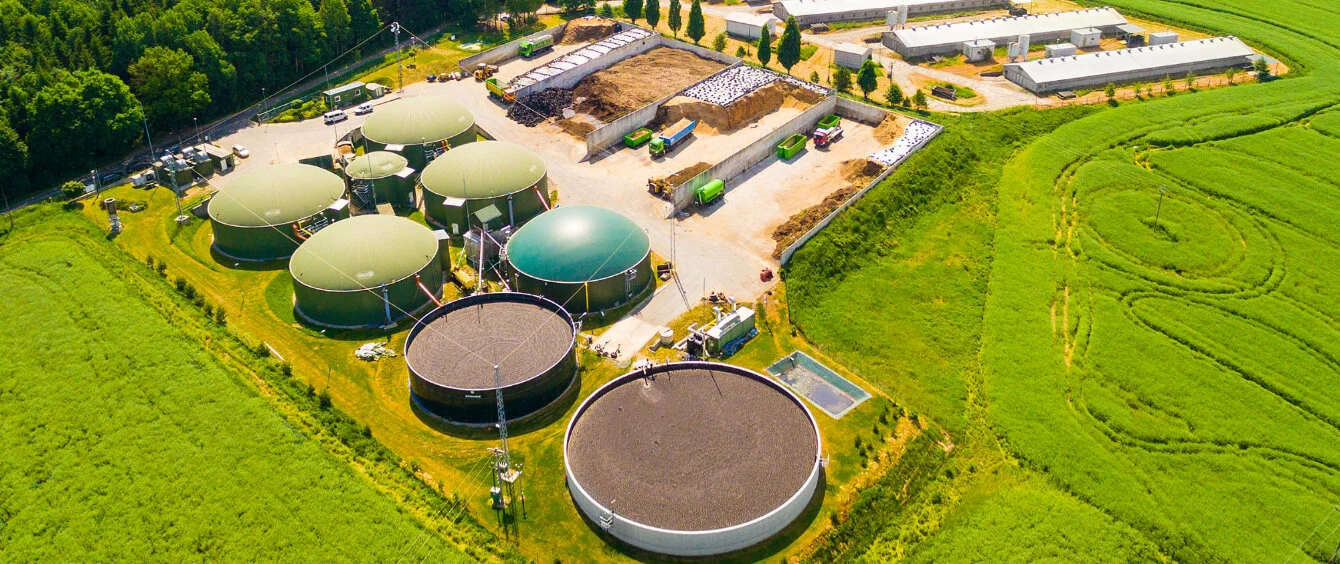Natural gas today provides around 25% of the world’s primary energy supply. It is the cleanest burning fossil fuel in terms of carbon emissions, but, nonetheless, a fossil fuel.
In a net zero world, gas systems need to be decarbonised, which means increasing the use of low carbon gases. A new study by the International Gas Union (IGU), the Global Renewable and Low Carbon Gas Report, aims to provide a baseline of where renewable gas production is today and how it might contribute to the energy transition in future.
Biogas/biomethane
Biogas is the raw gas produced from the decomposition of organic matter, by anaerobic digestion. It is predominantly used at the point of production for heat and power, but it can also be upgraded to a purity suitable for injection into the gas grid – at this point it has become ‘biomethane’.
Europe is the largest producer, accounting for more than half of output, with China providing a further 25%. Globally, Denmark has the highest targets for its use, aiming to make its gas system run 100% on biomethane by 2040.
However, this level of ambition is a rarity, and biogas production makes up just 1% of natural gas production worldwide, according to the report.
20-fold expansion possible
The IGU estimates that sustainable biomethane production could increase 20-fold, so that if all raw biogas were upgraded, biomethane could account for 20% of today’s natural gas supply, which by extension would be about 5% of global primary energy supply.
This would be a significant contribution to energy decarbonisation and particularly useful in terms of providing renewable energy in gaseous form for heating, seasonal storage and hard-to-decarbonise industrial processes.
Biomethane use also avoids additional investment in the gas grid or end-use appliances.
The IGU’s estimate is based on no additional land use change, no competition with food supply and no other adverse environmental impacts. It includes the use of forest residues made into biogas via gasification.
Hydrogen
Green, blue, grey or purple, hydrogen has become the rainbow gas. Green and blue hydrogen together are referred to as ‘low carbon hydrogen’.
According to the IGU, only 0.5% of hydrogen production is made from low carbon processes today, equivalent to just 0.03% of natural gas production. Production is expected to nearly quadruple by 2023, but, given the low base, volumes will remain small at least in the short to medium term.
As the report points out, scaling up green hydrogen production is critically dependent on scaling up all forms of renewable energy generation, which, not including large hydro, currently make up only 6% of global primary energy supply.
Although green hydrogen is the most expensive form of renewable gas, it is favoured by policy makers because of the potential for scalability and future cost reductions.
Policy focus
A number of countries and the EU have published hydrogen strategies in recent years. However, the IGU argues that the focus on hydrogen has left biogas out in the cold, despite its higher production volumes and significant potential.
There is currently insufficient momentum in the sector to deliver the potential 20-fold increase in production. Biomethane needs to move up the policy agenda, the report says.
All forms of renewable gas are currently more expensive to produce than natural gas. This, the IGU argues, means government support is needed to create a business case for scaling up output, with the costs ultimately borne by consumers or taxpayers.
This, in turn, will require social acceptance that the environmental benefits of renewable gases are worth the additional costs.
Given the low level of renewable gas production relative to demand total gas demand, there is a need for as many workable solutions as possible, the IGU says, arguing that “all forms of renewable gas should be pursued as quickly as possible.”
